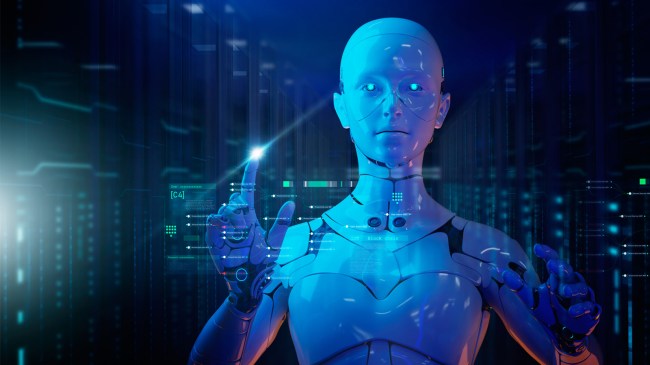iStockphoto
Further hastening our own demise, scientists have now created robots that can walk through water using lab-grown muscle tissue in its legs.
According to their research, published in the journal Matter, the robot these scientists have created is what they call a “biohybrid robot.”
It has “cultured skeletal muscle tissue” and has “achieved fine-tuned turning motions” and “forward and stop motions.”
It is the first such bipedal robot to have mastered these abilities.
Thankfully, for humans, so far it has some limitations.
For one, it is only 3 centimeters tall. Second, it needs a foam buoy to assist in standing upright in a water tank. It also travels at a speed of just 5.4 millimeters per minute and takes over a minute to turn 90 degrees. The robot also would need a nutrient supply system to keep the muscle tissue alive if it weren’t submerged in water.
“This is still basic research,” team member Shoji Takeuchi at the University of Tokyo, Japan explained to New Scientist. “We are not at the stage where this robot itself can be used anywhere. To make it work in the air, many more related issues would need to be solved, but we believe it can be done by increasing the muscular strength.”
“The next step for the biohybrid robot would be to develop a version with joints and additional muscle tissues for more sophisticated walking capabilities,” said Takeuchi. “Thick muscles would also need to be built to increase strength.”
While thus far limited in its abilities, it is just the next step in the evolution of a real-life Westworld.
In November, scientists announced that they now have the ability to create a complex robot hand with bones, tendons and ligaments using 3D printers … just like the android hosts use in Westworld – and we know how that ended.
Also, in December, scientists in South Korea broke a Guinness World Record for creating the fastest 100 meter sprint by a quadrupedal robot dog.
At the current rate of development of robots and artificial intelligence it won’t be very long before human scientists are no longer needed for androids to be created and developed. Soon they will just be doing it on their own. Then it’s bye-bye humans.

